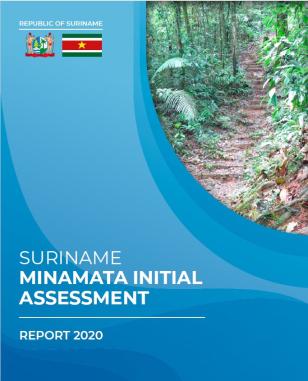Minamata initial assessment for Suriname

Minamata initial assessment for Suriname
September 2, 2020
Suriname acceded to theminamata Convention on 02august 2018.In its process towards accession, the Government of Suriname started in 2013 with the legal and institutional analysis of the then current situation towards the use of mercury and the role of the various actors.
This analysis resulted in the publication of an advice Document and a roadmap in 2015 which stated the activities that had to be implemented to phase out the use of mercury in Suriname. Since the outcome of the advice Document, the government started the process to ratify the minamata Convention and also started to implement the roadmap.
For Suriname one of the important obligations under this Convention is to formulate a national action Plan (naP) for the artisanal and Small Scale Gold mining (aSGm). Traditionally artisanal and Small Scale Gold mining has always been a source of income for parts of the community. The negative impact of mercury on health and environment in Suriname cannot be overlooked and needs to be addressed. Suriname applied for funding from the Global environment Facility for assisting the country in preparing the national processes of meeting the obligations of the minamata Convention on mercury. Through the enabling activities of the GeF, Suriname has been able to implement the project: GeF 00095987 “minamata initial assessment report” (mia report).
Through this project, which started in October 2017, Suriname has been able to further its national agenda on the phasing out of the use of mercury. The mia report describes the current situation of mercury releases in Suriname, the current awareness programs that exists in the country, a roadmap and actions which need to be undertaken to meet all the obligations of the Convention.

 Locations
Locations